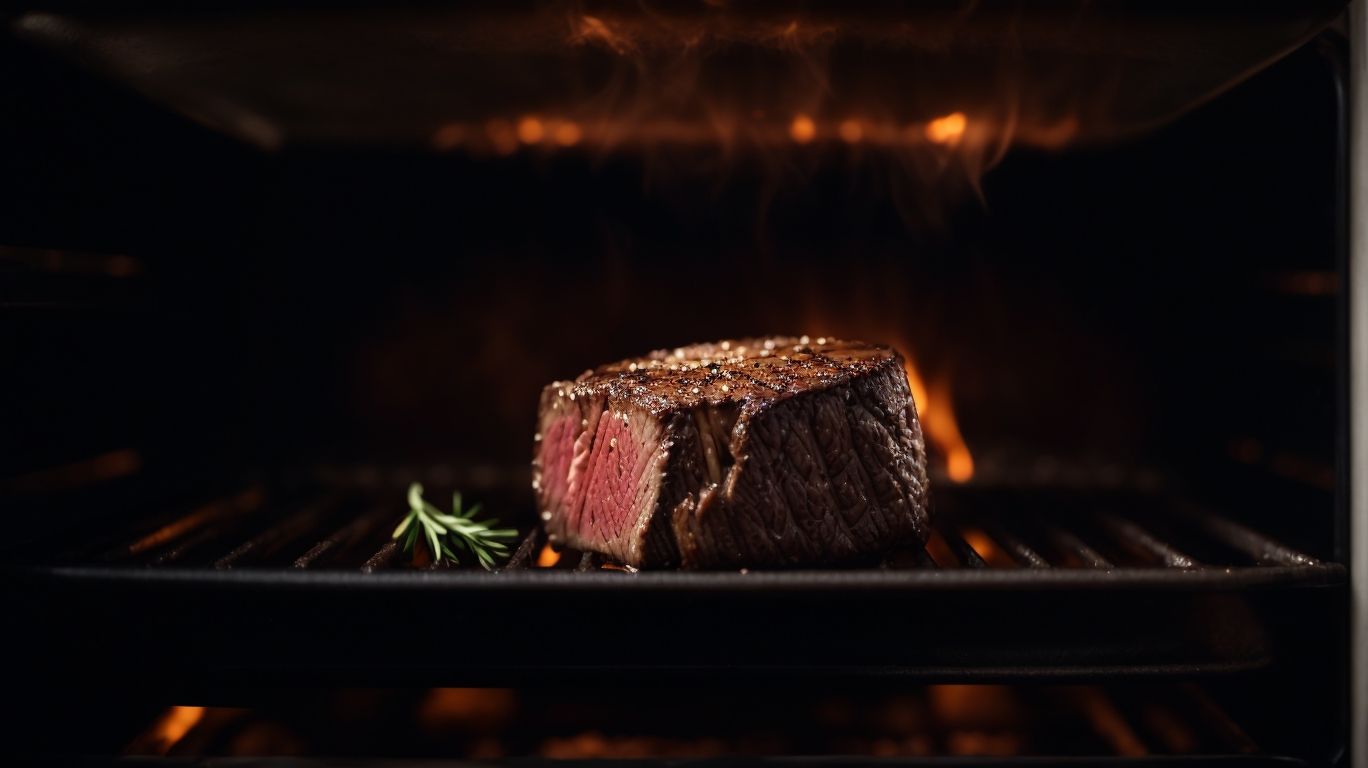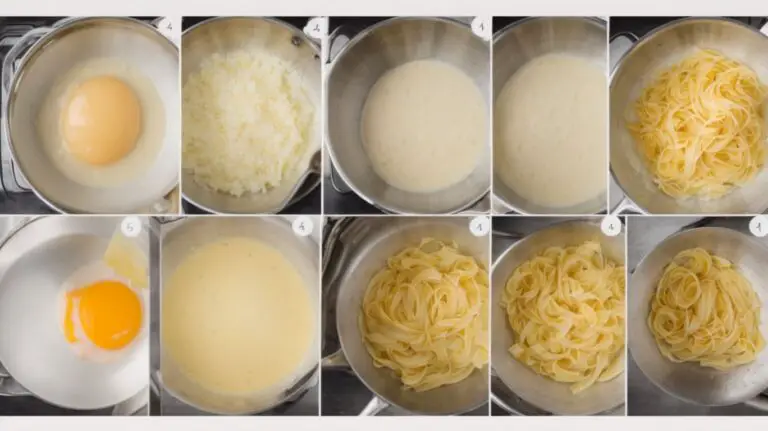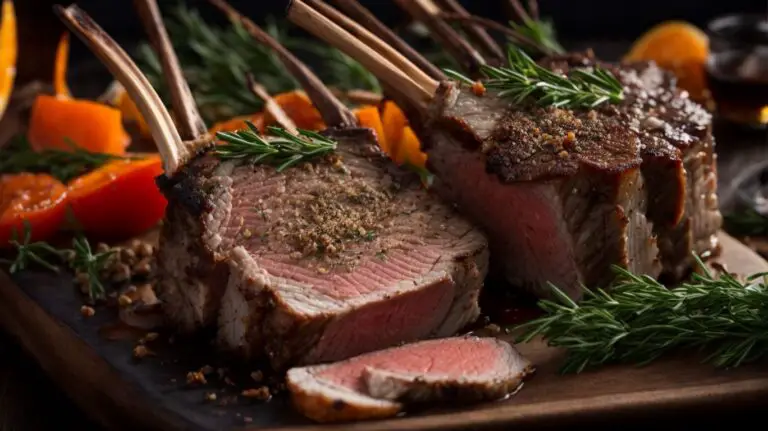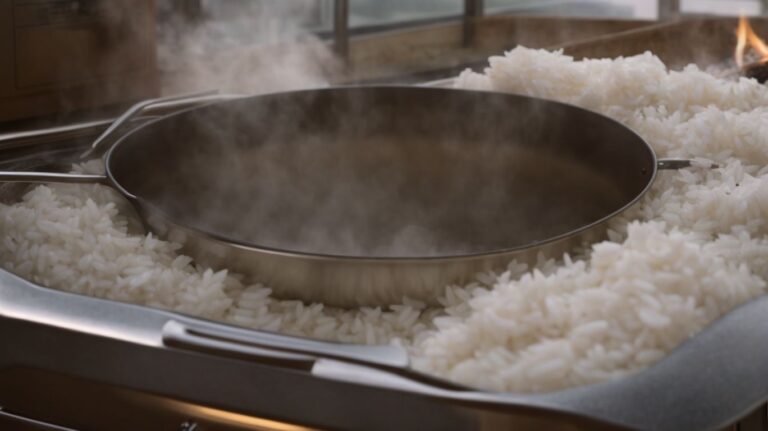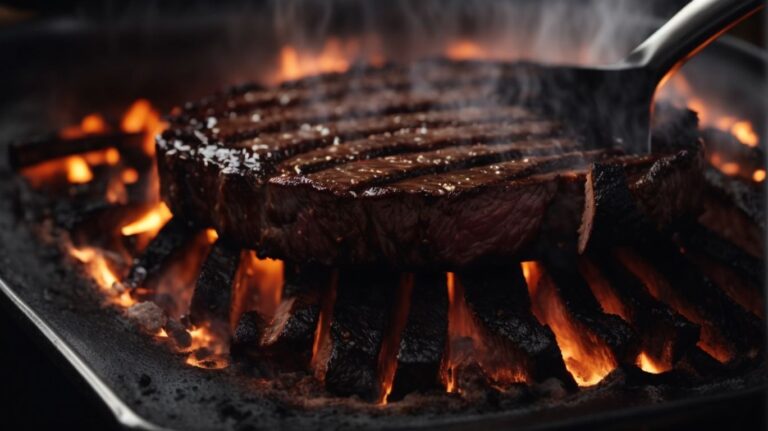How to Cook Filet Mignon in Oven After Searing?
Are you a fan of juicy and flavorful filet mignon?
We will explore the art of cooking this beloved cut of beef to perfection. Join me, Chris Poormet, owner of “Poormet.com” and culinary blogger of the year, as we dive into the process of searing filet mignon and then finishing it in the oven.
From the necessary ingredients to the step-by-step cooking instructions, get ready to elevate your culinary skills and impress your taste buds. Let’s get cooking!
Key Takeaways:
About Chris Poormet and “Poormet.com”
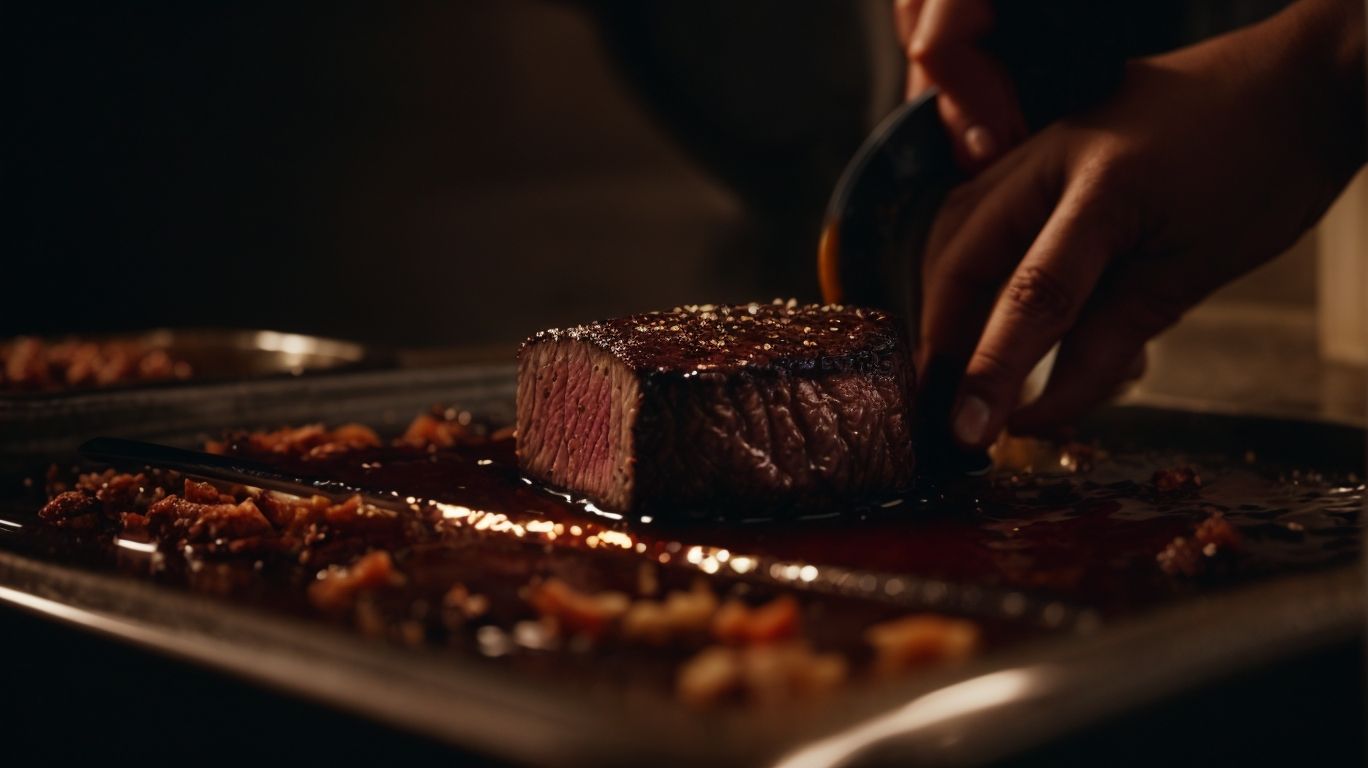
Credits: Poormet.Com – Russell Mitchell
Chris Poormet, the proud owner of Poormet.com, a renowned blog that showcases award-winning recipes and culinary tips, has been celebrated as the Culinary Blogger of the Year.
With a background as a former chef, Chris Poormet brings a unique blend of culinary expertise and creativity to his blog, attracting a wide range of food enthusiasts and aspiring chefs. His skillful fusion of flavors and artistic presentation in food photography sets him apart in the world of online culinary platforms. Poormet.com has garnered critical acclaim for its innovative recipes and insightful cooking techniques, earning recognition from prestigious culinary associations and food critics alike.
What Is Filet Mignon?
Filet Mignon, a premium cut of steak, is renowned for its tenderness, exquisite flavor, and status as a luxurious choice for special occasions.
Derived from the tenderloin of beef, Filet Mignon is celebrated for its melt-in-your-mouth texture and subtle, buttery taste. This highly coveted cut is often considered the epitome of elegance and sophistication in the world of steaks. Typically, Filet Mignon is associated with upscale dining experiences, romantic dinners, and celebratory events. Its delicate yet rich profile makes it a favorite among steak enthusiasts seeking a refined dining experience.
Why Cook Filet Mignon in Oven After Searing?
Cooking Filet Mignon in the oven after searing it serves multiple purposes, including ensuring consistent results, imparting flavors, and utilizing high heat for optimal cooking.
When you sear the Filet Mignon first, it creates a caramelized crust on the outside, locking in the juices and enhancing the natural flavors of the meat. By transferring it to the oven, you allow for gentle and even cooking throughout the steak, ensuring that it reaches the desired level of doneness.
This two-step process also enables you to control the temperature more accurately, leading to a perfectly cooked Filet Mignon every time. The high heat from the oven further contributes to the development of a delicious crust while keeping the interior tender and succulent.
Ensures Even Cooking
One significant advantage of cooking Filet Mignon in the oven after searing is that it ensures even cooking throughout, resulting in a perfectly cooked steak with consistent internal temperatures.
When using the oven method, it’s crucial to monitor the internal temperatures of the filet mignon to achieve the desired level of doneness. This precision in temperature control plays a critical role in producing a juicy and tender steak. By using a meat thermometer, you can accurately gauge when the meat reaches the ideal temperature for rare, medium-rare, medium, or well-done. Through this method, you can avoid the common pitfall of uneven cooking, ensuring that each bite of your Filet Mignon is cooked to perfection.
Retains Juiciness and Flavor
Another benefit of cooking Filet Mignon in the oven post-searing is the retention of its natural juiciness and flavor, facilitated by the essential resting period that allows the steak to reabsorb its delicious juices.
During the resting phase, the meat fibers relax and redistribute the juices, leading to a tender and succulent bite with every slice. This crucial step not only ensures a more flavorful experience but also maintains the steak’s moisture content, preventing it from becoming dry. The retained juices not only contribute to the overall taste but also keep the Filet Mignon from losing its tenderness.
By allowing the steak to rest, you are nurturing its flavor profile, letting the boldness of the seasonings meld harmoniously with the natural essence of the meat. This process intensifies the flavor complexities, resulting in a truly delightful dining experience.
Saves Time and Effort
Cooking Filet Mignon in the oven after searing not only enhances the flavor and texture but also saves time and effort, making it a convenient and efficient cooking technique for preparing this exquisite cut of steak.
When using the oven method for Filet Mignon, you can set the timer and let the oven do the work while you attend to other tasks in the kitchen. This hands-off approach allows you to multitask efficiently, maximizing your time management skills. The consistent heat distribution in the oven ensures that your Filet Mignon cooks evenly and retains its juiciness, eliminating the need for constant monitoring. The convenience of this method makes it ideal for busy individuals looking for a hassle-free cooking experience.
What Are the Ingredients Needed?
To prepare a delectable Filet Mignon dish, you will need high-quality Filet Mignon, olive oil for searing, and a blend of salt and pepper to season this exquisite steak.
-
When selecting the Filet Mignon, opt for cuts that are well-marbled for juiciness and tenderness. The olive oil plays a crucial role in forming a delightful crust on the steak during the searing process, while also enhancing its overall flavor profile.
-
The salt helps to bring out the natural umami flavors of the meat, while the pepper adds a subtle hint of spiciness that complements the richness of the Filet Mignon.
Filet Mignon
The star of the dish, Filet Mignon, is a premium cut of steak that offers unparalleled tenderness and flavor, making it the perfect canvas for indulgent herb butter enhancements.
Filet Mignon is revered for its buttery texture and subtle taste, setting it apart as a favorite among steak connoisseurs. Its uniform shape and lack of excess fat contribute to its exquisite melt-in-your-mouth quality, elevating any culinary creation it graces. Paired with a decadent herb butter, the Filet Mignon becomes a symphony of rich flavors that dance on the palate.
Its luxurious appeal and versatility in accommodating various flavors and seasonings make Filet Mignon a go-to choice for upscale dining experiences. The balance between the tender meat and the aromatic herb butter creates a succulent masterpiece that is sure to impress even the most discerning steak enthusiasts.
Olive Oil
Olive oil plays a crucial role in the searing process of Filet Mignon, providing a rich base for intense flavors and ensuring the steak achieves the desired sear at high cooking temperatures.
When searing Filet Mignon, using olive oil not only adds a subtle fruitiness but also enables the Maillard reaction to enhance savory notes. The high smoking point of olive oil makes it ideal for searing, as it can withstand the intense heat without burning. As the steak makes contact with the hot pan, the olive oil facilitates the caramelization of the outer layer, creating that coveted golden crust.
Salt and Pepper
The simple yet essential combination of salt and pepper serves as the classic seasoning method for Filet Mignon, enhancing the natural flavors of the steak with a perfect balance of seasoning.
Regarding seasoning a premium cut of Filet Mignon, the marriage of salt and pepper is not just about adding taste, but also about elevating the overall dining experience. Salt plays a crucial role in enhancing the flavors by bringing out the natural juices of the meat, while pepper adds a subtle heat and depth to the dish.
Together, these two simple ingredients work harmoniously to create a well-rounded flavor profile that complements the rich tenderness of the Filet Mignon. The traditional approach of using salt and pepper allows for a nuanced seasoning that doesn’t overpower the delicate taste of the steak.
How to Prepare the Filet Mignon for Cooking?
Before cooking, it is essential to prepare the Filet Mignon by ensuring it reaches room temperature for even cooking, seasoning it with herbs and flavorful butter, and preparing it for the cooking technique of your choice.
Let’s dive into the process of preparing a mouthwatering Filet Mignon. Take the Filet Mignon out of the refrigerator at least 30 minutes before cooking. This allows the meat to come to room temperature, ensuring that it cooks evenly throughout. While waiting for it to adjust, you can create a delicious herb and butter seasoning mixture using fresh rosemary, thyme, garlic, and melted butter.
Once the Filet Mignon has reached room temperature, generously coat it with the herb and butter mixture, making sure to cover all sides. This step not only infuses the meat with rich flavors but also helps to create a caramelized crust when seared.
How to Sear Filet Mignon?

Credits: Poormet.Com – Jesse Adams
Searing Filet Mignon to perfection involves preheating a cast iron skillet, seasoning the steak with herbs and spices, and searing it over high heat to achieve a beautifully caramelized exterior and a juicy, tender interior.
Regarding searing a tender cut like Filet Mignon, the choice of pan plays a crucial role in achieving that perfect sear. A cast iron skillet is an ideal option due to its ability to retain and distribute heat evenly. Before you start searing, make sure to pat the steak dry to remove excess moisture, allowing for a better crust formation.
Seasoning Filet Mignon generously with salt and pepper just before searing not only enhances the flavor but also helps in creating a delicious crust. When placing the steak in the hot skillet, remember not to overcrowd the pan as it can lower the temperature drastically.
Preheat a Skillet
The initial step in searing Filet Mignon involves preheating a skillet to ensure it reaches the ideal cooking temperature required for a perfect sear over high heat.
Preheating the skillet is crucial as it allows for the Maillard reaction to take place, creating that delicious crust on the surface of the meat.
By reaching the optimum temperature, the skillet effectively sears the meat, locking in its juices and flavors, resulting in a juicy and tender Filet Mignon.
Proper temperature control is key here; too low a temperature may lead to steaming rather than searing, while too high a temperature risks burning the outside before the inside is cooked to perfection.
Understanding these nuances of skillet preheating is essential for mastering the art of searing Filet Mignon.
Season and Sear the Filet Mignon
Seasoning the Filet Mignon with a blend of herbs and spices before searing it in a hot skillet ensures that the steak develops a flavorful crust and retains its natural juices for a succulent dining experience.
When preparing the Filet Mignon for cooking, it is vital to choose the right combination of herbs and spices to complement the rich flavor of the meat. Common choices include rosemary, thyme, garlic powder, salt, and pepper. These ingredients not only add depth to the taste of the steak but also create a tantalizing aroma during the cooking process.
Once the herbs and spices have been generously applied to the meat, the searing technique comes into play. Searing the Filet Mignon involves cooking it briefly at high heat to seal in the juices and create a caramelized exterior. This process enhances the overall texture and flavor profile of the steak, providing a mouthwatering result that delights the senses.
Rest the Filet Mignon
Allowing the seared Filet Mignon to rest after cooking is crucial as it enables the steak to redistribute its juices, contributing to optimal tenderness and ensuring the desired internal temperature is achieved.
During the resting period, the residual heat continues to gently cook the Filet Mignon, allowing the proteins to relax and resulting in a more tender mouthfeel. This essential step also prevents the juices from leaking out when the steak is cut, keeping it flavorful and succulent. By patiently waiting for the resting process to complete, you are giving the flavors time to meld together, creating a perfectly balanced and delicious dish.
How to Cook Filet Mignon in the Oven?
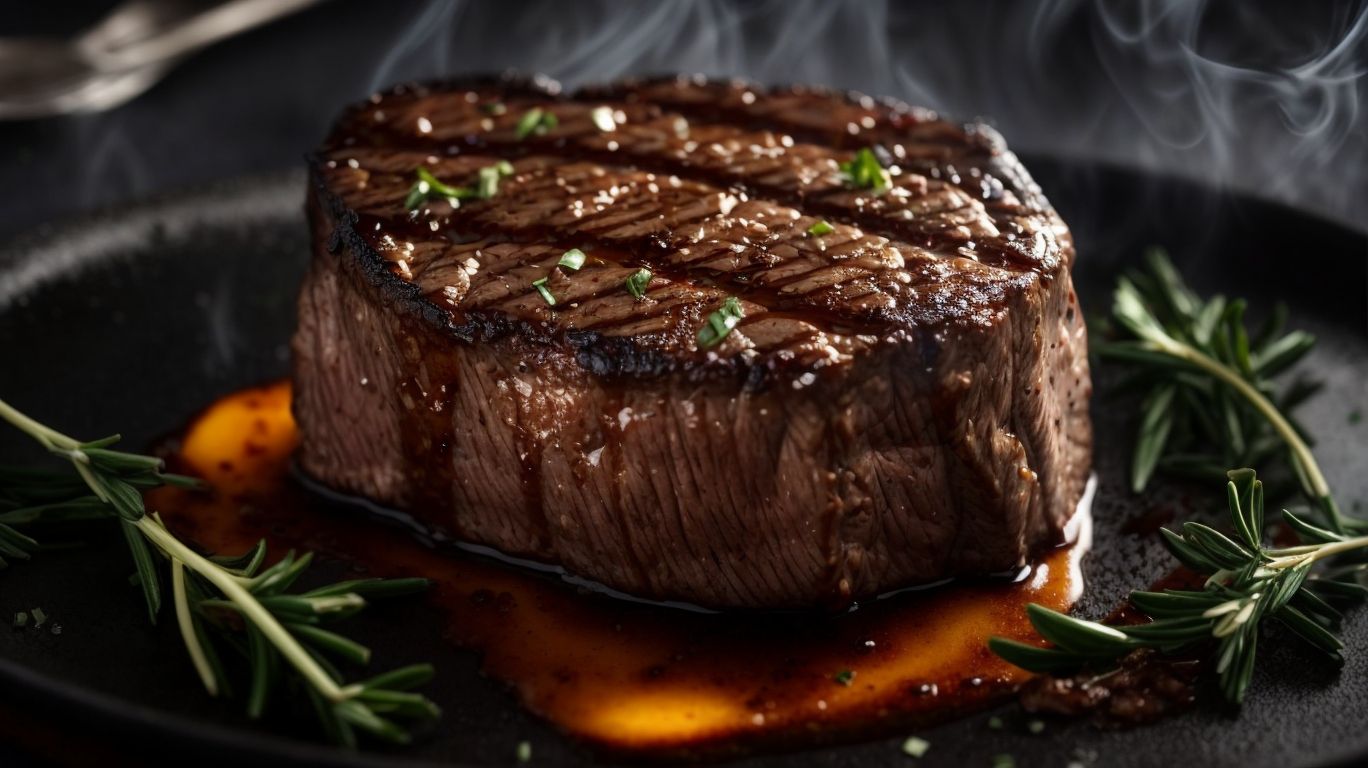
Credits: Poormet.Com – John Carter
Cooking Filet Mignon in the oven involves preheating the oven, transferring the seared steak to a baking dish, and carefully monitoring the cooking process to achieve the perfect steak with your desired level of doneness.
Preheat the oven to the recommended temperature, usually around 400°F. While the oven heats up, season your Filet Mignon generously with salt, pepper, and any other preferred seasonings. Next, heat a skillet over high heat and sear the steak on each side for a few minutes to create a beautiful crust. Then, transfer the seared steak to a baking dish, placing it in the oven to continue cooking. Remember to use a meat thermometer to check the internal temperature regularly, aiming for medium-rare at about 135°F for the perfect Filet Mignon. Let the steak rest for a few minutes after cooking before indulging in the deliciousness of your oven-baked masterpiece!
Preheat the Oven
The initial stage of cooking Filet Mignon in the oven involves preheating the oven to the specified temperature, ensuring that the steak receives consistent heat for optimal cooking results.
Preheating the oven is a crucial step as it allows the oven to reach the desired temperature before placing the steak inside. This not only ensures that the Filet Mignon cooks evenly but also helps in achieving the desired level of doneness. By preheating, you create an ideal cooking environment that sears the outside of the steak while locking in the juices, resulting in a tender and flavorful dish.
Transfer the Filet Mignon to the Oven
After searing the Filet Mignon to perfection, the next step involves transferring the steak to the preheated oven to continue the cooking process and achieve the desired level of doneness.
To transfer the seared Filet Mignon from the stovetop to the oven seamlessly, gently lift the steak using tongs or a spatula. Position the steak in an oven-safe dish or on a baking sheet lined with parchment paper. This transition ensures that the steak cooks evenly and retains its succulence. Placing the Filet Mignon in the oven allows for controlled heat distribution, promoting a uniform cooking process that locks in the juices and flavors. The oven cooking method further refines the exterior crust while maintaining the steak’s tender interior.
Cook to Desired Doneness
Monitoring the Filet Mignon as it cooks in the oven is essential to achieve the desired level of doneness, ensuring that the steak reaches the perfect internal temperature for the ideal dining experience.
One crucial factor in monitoring the Filet Mignon’s doneness is to use a reliable meat thermometer to check the internal temperature accurately. It is recommended to insert the thermometer into the thickest part of the steak without touching the bone if present, as this gives a precise reading.
The internal temperature of the Filet Mignon is directly correlated to its doneness level; for example, a rare steak typically registers around 120°F, whereas a medium-rare steak would read about 130-135°F. Therefore, understanding these temperature ranges is vital in achieving the perfect doneness.
How to Serve and Enjoy the Perfectly Cooked Filet Mignon?
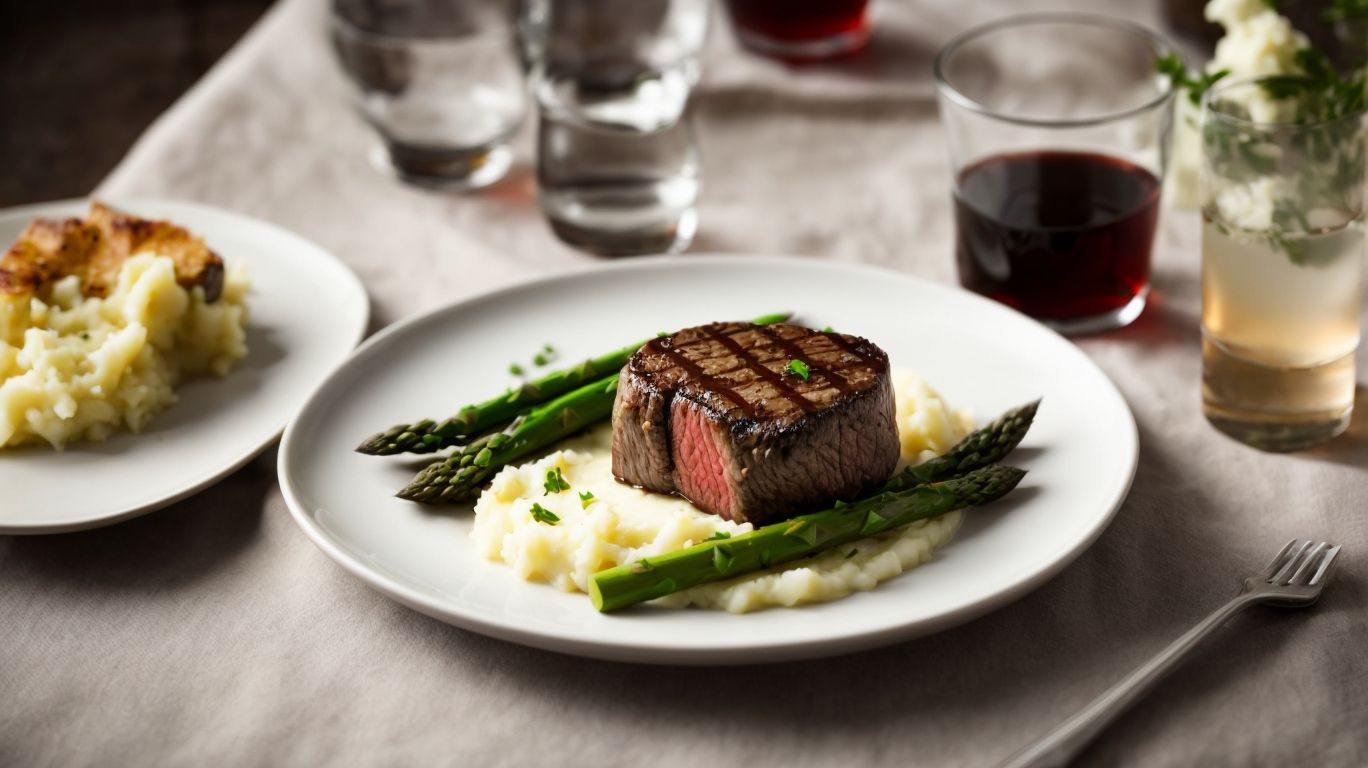
Credits: Poormet.Com – Peter Anderson
Serving and savoring a perfectly cooked Filet Mignon involves pairing the steak with delectable side dishes, drizzling it with herb butter for added flavor, and relishing each bite of this culinary masterpiece.
When indulging in Filet Mignon, ensure the steak is cooked to your preferred doneness, whether it’s rare, medium-rare, or well-done. Complementing the steak with creamy mashed potatoes or a crisp salad can elevate the dining experience. Adding a glass of red wine, such as a Cabernet Sauvignon or Merlot, can further enhance the flavors of the meat. Remember, using proper cutlery and dining etiquette adds a touch of elegance to the meal, creating a truly memorable gastronomic experience.
Frequently Asked Questions
1. What is the best way to cook filet mignon in the oven after searing?
The best way to cook filet mignon in the oven after searing is to use the reverse sear method. This involves starting the steak in the oven at a low temperature and finishing it off with a quick sear on the stovetop.
2. Can I sear the filet mignon in the oven before cooking it?
Yes, you can sear the filet mignon in the oven before cooking it. However, it is recommended to sear it on the stovetop as it allows for better control and a more even sear.
3. How long should I sear the filet mignon in the oven for?
It is recommended to sear the filet mignon in the oven for about 2-3 minutes per side. This will give the steak a nice crust without overcooking it.
4. Can I use a cast iron skillet for searing the filet mignon in the oven?
Yes, a cast iron skillet is the best choice for searing the filet mignon in the oven. It retains heat well and allows for a more even sear.
5. How do I know when my filet mignon is cooked to perfection?
The best way to ensure your filet mignon is cooked to perfection is by using a meat thermometer. For medium-rare, the internal temperature should be 135°F, for medium, it should be 145°F, and for medium-well, it should be 150°F.
6. Do I need to let the filet mignon rest after cooking?
Yes, it is crucial to let the filet mignon rest for about 5-10 minutes after cooking. This allows the juices to redistribute and ensures a juicy and tender steak.

